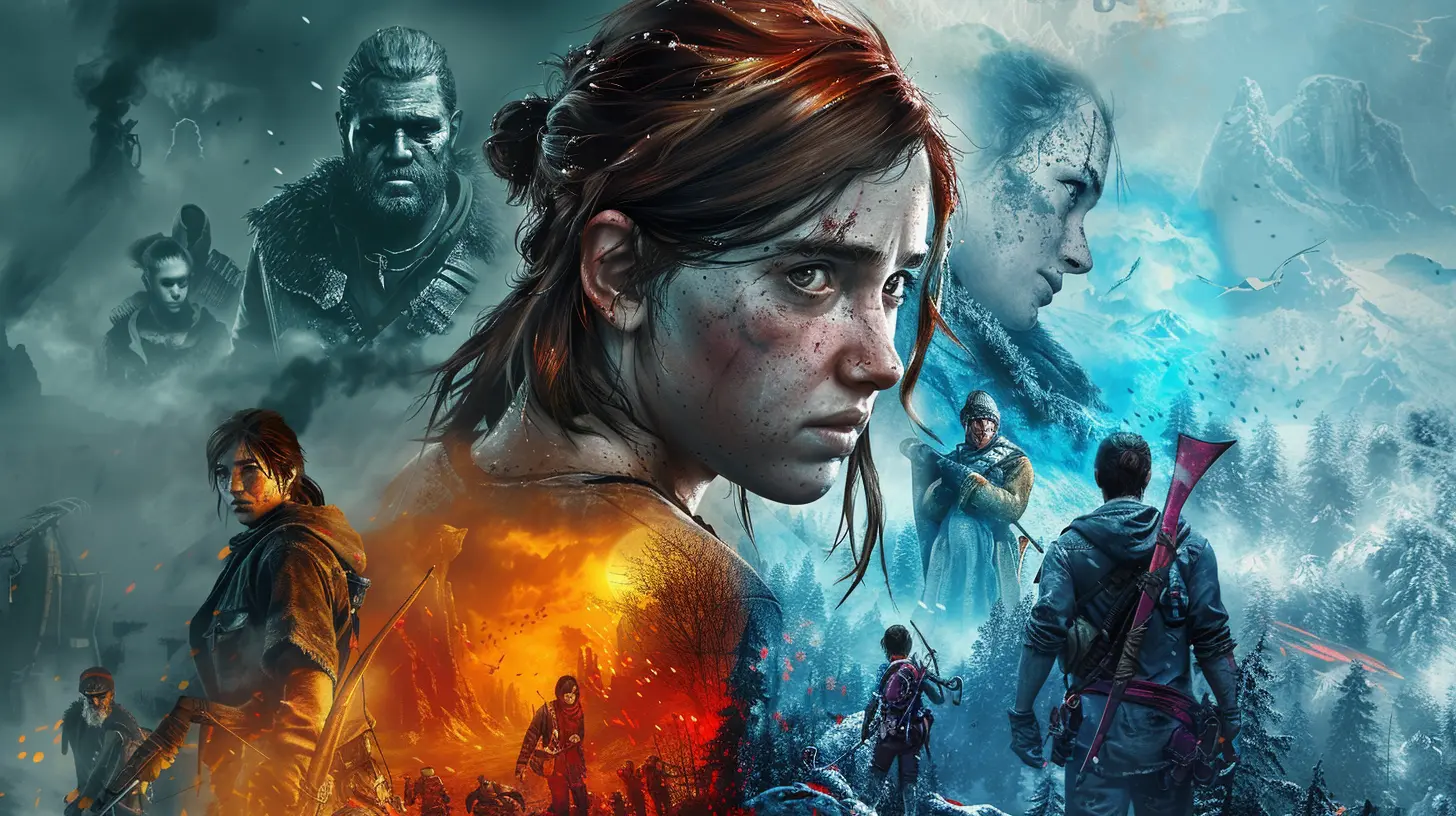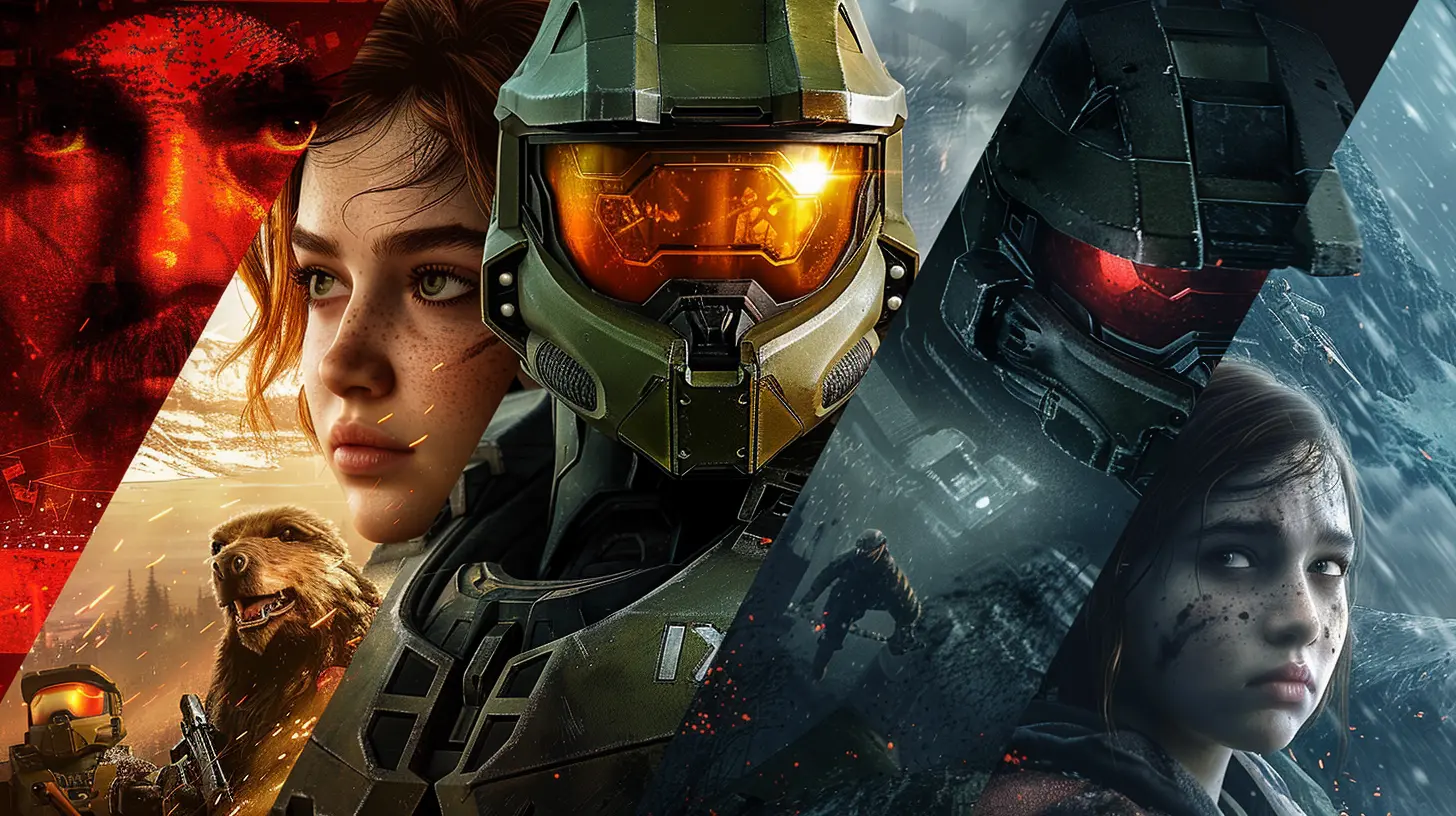Top Games That Pushed Console Limits
13 August 2025
Gaming has come a long way, hasn’t it? From pixelated sprites bouncing across cathode-ray tube screens to jaw-dropping cinematic experiences that rival Hollywood blockbusters. Through every console generation, some games didn’t just stick to the script—they broke the mold. These are the trailblazers, the pioneers, the ones that made us say, “Wait—how did they even pull that off on this console?”
In this article, we’re diving into the top games that pushed console limits—titles that squeezed every ounce of power from the hardware, raised the bar for the entire industry, and left gamers awestruck. Buckle up. This ride through gaming history is about to blow your mind.
What Does It Mean to "Push Console Limits"?
Before we get into the list, let’s set the stage. When we say a game “pushed console limits,” we’re talking about:- Graphics that felt next-gen
- Innovative gameplay mechanics
- Massive open worlds
- Smooth performance despite hardware bottlenecks
These games didn’t just look good—they achieved technical feats that made developers and players alike do a double-take.
1. The Last of Us Part II (PS4)
Let’s start big. Naughty Dog has always been a studio that knows how to get the absolute max out of a PlayStation console. But with The Last of Us Part II, they flexed harder than ever.Picture this: unbelievably detailed environments, seamless animations, zero load screens, and emotionally gripping cutscenes that felt real. And remember—it ran on a base PS4 from 2013. That’s like turning a sedan into a Formula 1 car.
This game was a masterclass in optimization. Its AI systems, character models, and environment interactivity don’t just look good—they work flawlessly together. It was the PS4's swan song, and what a note to end on.
2. The Legend of Zelda: Breath of the Wild (Nintendo Switch / Wii U)
How do you breathe fresh life into a decades-old franchise? You make a game so open and dynamic that players can solve puzzles however they like, climb literally anything, and stumble into breathtaking moments totally unplanned.Breath of the Wild made the Switch—and even the older Wii U—feel like a high-end gaming PC. The massive world loaded seamlessly, the physics engine was shockingly robust, and you could approach problems in hundreds of creative ways.
Nintendo didn’t settle. They rewrote the Zelda rulebook, and in doing so, stretched the Switch’s tiny cartridge-based system to its very edge.
3. Red Dead Redemption 2 (PS4 / Xbox One)
This one’s a no-brainer. Red Dead Redemption 2 isn't just a game—it’s a living, breathing world crammed inside a disc.We're talking about:
- Dynamic weather
- Realistic horse behavior
- NPCs who seem to live actual lives
- A map so vast it’s practically a country
And yet, it ran on consoles that were already entering their twilight years. Rockstar’s attention to detail is notorious—they didn’t just push the envelope; they shattered it. Sure, the loading screens were long, but once you were in? You lived there.
4. Metal Gear Solid 2: Sons of Liberty (PlayStation 2)
This one takes us back to 2001. The PS2 was powerful for its time, but Metal Gear Solid 2 made it look like a supercomputer.Remember the water effects? The way guards would react dynamically to your actions? The facial animations during cutscenes? This was before HD gaming was even a thing! Hideo Kojima and his team created something so ahead of its time that many players didn’t fully appreciate it until years later.
It wasn’t just a game—it was an interactive movie with gameplay that broke new ground for stealth action.
5. Halo: Combat Evolved (Xbox Classic)
Microsoft entered the console race swinging with Halo: Combat Evolved. Here's the thing—it didn’t just push Xbox hardware. It pushed the entire console gaming landscape forward.Huge open maps? Check. AI-driven enemies that actually flank and strategize? Yep. Seamless vehicle integration into FPS combat? You bet. Online multiplayer that laid the groundwork for countless games to follow? Absolutely.
Bungie squeezed every bit of performance from that chunky green box, creating a legend that helped define a generation.
6. God of War III (PlayStation 3)
Kratos’ journey on the PS3 was nothing short of epic—and not just in story, but in scale. God of War III pulled off something few thought possible: it made boss fights feel like you were battling literal titans—some of them were titans!With cinematic transitions, brutal combat, and set pieces that blurred the line between gameplay and movie, this game pushed the PS3 to its absolute limits. The Cell processor inside the PS3 was notoriously difficult to develop for, yet Santa Monica Studios mastered it like a symphony conductor leading an orchestra.
7. Crysis (Xbox 360 / PS3 Ports)
“Can it run Crysis?” That meme didn’t come from nowhere.When Crysis finally landed on consoles—years after its PC debut—it made developers sweat. The Xbox 360 and PS3 were not designed to handle the game's vision. But somehow, Crytek made it work.
Sure, there were compromises. But the fact this beast of a game could run on seventh-gen consoles at all? That was a technical miracle. The lush environments and advanced physics were way ahead of their time.
8. Uncharted 2: Among Thieves (PlayStation 3)
Another Naughty Dog gem, Uncharted 2 proved just how jaw-dropping the PS3 could be when pushed to its limits.It wasn’t just about the graphics (though they were stunning). It was about:
- Cinematic storytelling
- Seamless transitions between gameplay and cutscenes
- Set pieces that rival summer blockbusters
Remember the train level? Of course, you do. That entire sequence was real-time and entirely playable. It changed what people expected from action games—and left other developers scrambling to catch up.
9. Shadow of the Colossus (PlayStation 2)
This one felt like magic.Shadow of the Colossus was doing things that the PS2 simply shouldn't have been able to do. A massive open world, gigantic boss battles, real-time fur physics, and minimal loading? On the PS2?
It was glitchy at times, sure, but that’s the price of ambition. Team Ico created a poetic masterpiece that didn’t just stretch console limits—it redefined them.
10. Grand Theft Auto V (PS3 / Xbox 360)
Let’s zoom back to 2013 real quick. Most developers were winding down PS3 and Xbox 360 development. Rockstar? They dropped GTA V.This game had everything: a sprawling world, multiple protagonists, dynamic events, and online capabilities. And they pulled it off on hardware that was nearly a decade old.
Even today, people still play GTA V—remastered and re-released for modern consoles. But it all started on platforms few thought could handle such scale. Rockstar didn’t just push boundaries—they broke them, buried them, and then built a theme park over them.
Why Pushing Console Limits Matters
You might be wondering—why does any of this matter? Why should you care that some games maxed out their consoles?Because these games set new standards. They challenge what’s possible. They drive innovation. And let’s be honest—they’re fun to watch. Like seeing a magician pull off an impossible trick, except the trick is coded in C++ and the magician is a sleep-deprived game developer.
When one studio goes above and beyond, it forces others to up their game. It’s a cycle of inspiration that lifts the entire industry.
Honorable Mentions
Couldn’t fit every legend in detail, but these deserve a shoutout:- Killzone 2 (PS3) — Incredible lighting and visuals
- F-Zero GX (GameCube) — 60 FPS with insane speed
- Resident Evil 4 (GameCube) — Redefined 3rd-person action
- Bayonetta 2 (Wii U) — Stylish gameplay on underpowered hardware
Final Thoughts
Gaming isn’t just about having fun—it’s about pushing boundaries. These titles didn’t settle for “good enough.” They chased excellence, wrung every frame from their consoles, and left players everywhere breathless.So next time you boot up your favorite game, think about the wizards behind the curtain making the impossible possible. Who knows? Maybe your next favorite game will be the one that breaks the mold all over again.
Game on!
all images in this post were generated using AI tools
Category:
Game RankingsAuthor:

Brianna Reyes
Discussion
rate this article
1 comments
Weston Kane
In exploring the top games that pushed console limits, we uncover more than mere technological feats; we witness the evolution of storytelling, artistry, and player engagement. These titles not only expanded hardware capabilities but also reshaped our perceptions of what interactive entertainment could achieve, leaving an indelible mark on gaming history.
August 26, 2025 at 4:54 AM

Brianna Reyes
Thank you for your insightful comment! Indeed, the intersection of technology, storytelling, and player engagement in these games has truly redefined the gaming landscape.


